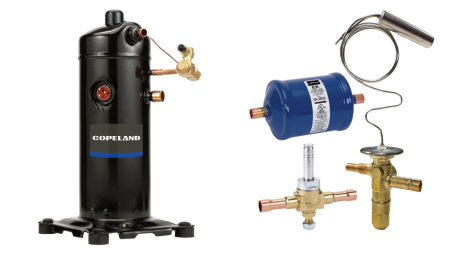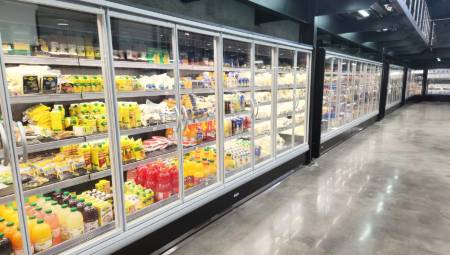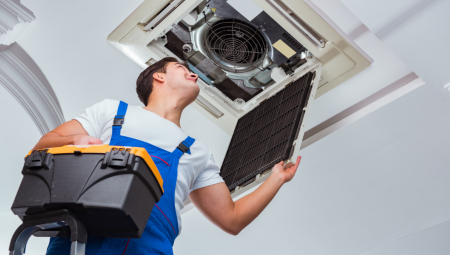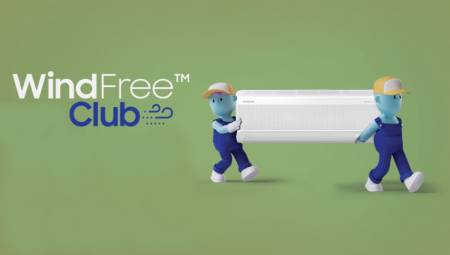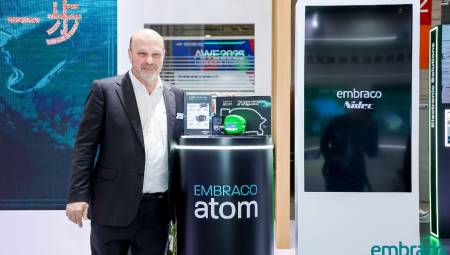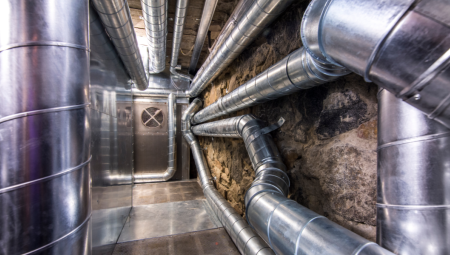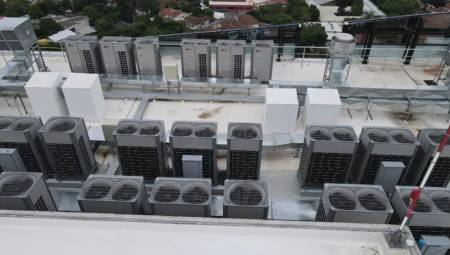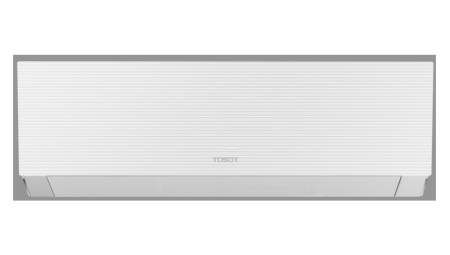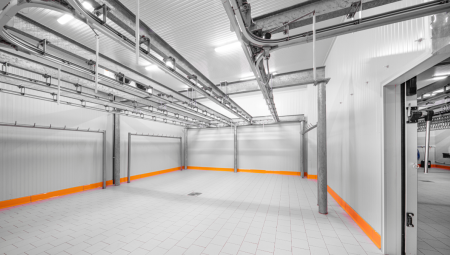
Heating experts claim that electric power is ideal for space heating. It is relatively simple to control and distribute. In many applications, the cleanliness and compactness of electric heaters represent a very attractive alternative. It does not require fuel storage, does not produce fumes or emissions and, according to specific provisions, offers a safer alternative to fuel heaters.
Cost and energy conservation are the dominant factors in electric heating design. In general, and compared to other heating methods, electric heating has a lower installation cost, requires less maintenance, has lower insurance rates, and is easier to zone. In many cases electric space heating is adopted when the minimum initial cost is a dominant factor. However, electricity is a relatively expensive energy source. Rising energy costs in recent years have made electricity economically prohibitive in some cases. The operating costs of electrical systems are usually higher than those of heating with gas or fossil fuels.
For the selection of the System, a detailed analysis is required when selecting for a heated building that satisfies both performance and economic effectiveness. Performance is defined as the ability of the system to meet the needs of the building, determined based on the energy consumption required to maintain an indoor temperature above outside temperatures. This energy need is called system load and is useful when it comes in the form of a load profile or load duration curve. A load profile curve shows the energy required to maintain an indoor temperature based on the time of day. The load duration curve displays the same information in a different way, based on the number of hours during which the system is at each load level. The total energy required can be determined by calculating the areas below these curves.
The costs associated with the system will be estimated for the entire life cycle of the equipment. While the initial and installation costs of the equipment are obtainable (known), the daily costs of long-term maintenance and spare parts will have to be estimated. A performance analysis, if complete, will need to include all of these costs.
Operating costs are particularly difficult to determine. Annual heating demand is used along with electricity price estimates to determine annual operating costs. It is important to take into account the electricity price structure especially if fluctuations in demand or rates are applied according to hours of the day. Local power companies can provide forecasts of future electricity prices. You also have to take into account the prices of other energy sources, such as fuel oil and gas. The energy cost comparisons shown below Figure 1 and Figure 2 may be useful for an initial estimate of relative costs of electric versus gas or fuel oil heating.


I. Decentralized systems
A. Natural Convention EquipmentEquipment embedded in the floor.
Built-in and wall-mounted equipment.
Socket convectors.
Water plinth convectors, with immersion elements.
B. Forced Air Equipment
Ventilators.
Heating.
Heaters built into the wall.
Zócalo heaters.
Heaters built into the floor.
C. Radiant equipment (high intensity)
Radiant wall, inserted and mounted on surfaces.
Metal-lined element with reflector.
Quartz tube element with reflectors.
Quartz lamps with reflector.
Heating lamps.
Border equipment (vault).
D. Radiant panel type systems (low intensity)
Ceiling-mounted radiators with recessed conductors.
Prefabricated panels.
Radiant type mounted on the floor with recessed conductors.
Radiant convector panels.
II. Centralized Systems
A. Heated water systemsElectric boiler.
Electric boiler with accumulation in hours.
Heat pumps.
Integrated heat recovery systems.
B. Steam Systems: Electric boiler, by immersion
C. Heated air systems
Duct heater.
Electric ovens.
Heat pumps.
Integrated heat recovery system.
Ventilation systems.
Integrated heating and cooling equipment.
Storage equipment (ceramics and water)
Central Hot Water Systems
A central hot water system consists of an electric boiler and a series of radiators, convectors, heaters, console heaters, or heating and ventilation equipment. The water is heated in the boiler by elements or resistors and is distributed throughout the structure. Multiple elements are combined to obtain the total capacity required. Multi-element systems are arranged in such a way that each unit can be activated or deactivated in sequence, thus avoiding large fluctuations in voltage. It is also important that the elements are not activated when the circulation pump is not running.Some boilers are designed for space efficiency and can be wall-mounted. A 20 kW boiler has a volume of approximately 0.04 m3. Larger applications, with capacities up to 5000 kW, can be achieved with electrode boiler of 5 kV and higher in rated power. Electric boilers are effective with respect to space coverage, in addition to being clean, not needing smoke pipes, chimneys or fuel storage.
Hot air systems can be custom designed for specific specifications. Some boilers are particularly well suited to multi-zone heating. A control system activates the number of elements needed to meet the need of each zone. It is also possible to accumulate water (hydronics) in hot water systems. During the normal operation of the system, the water is stored at high temperature, and can be used during operation during hours of low consumption. A large capacity storage tank can hold water at a temperature of 93.3 to 135.0°C at pressures up to 5.2 bar. An automatic valve can supply water at low temperatures by mixing it with cooler water from a main feed pipe. Steam can be obtained by taking hot water in a low-pressure separation chamber.
Hot Air Systems
A fan (central) and duct system constitutes a simple hot air system. Electric heating equipment is installed in the ducts near the fan to regulate the temperature of the structure as a whole. Single room control is achieved by heating the air at the outlet. Hot air systems provide a suitable medium for taking fresh air, thus ensuring good ventilation. Other important functions of this type of system include circulation and filtration.
Heating elements for ducts are manufactured in sleeved or flanged designs. In general, the codes specify that a minimum of 122 cm of duct is installed between the element and fan outlets, elbows, baffles or similar obstructions. This measure minimizes the overheating of sections of the heating element that receives non-uniform airflow.
Heating elements can be sized by calculating heat transfer. For a simpler design, nomograms have been developed that relate the air flow, increase in temperatures and kilowatts of the heating element.
Electric furnaces consist of heating batteries and a fan (so plant) inside an insulated housing. The air is introduced (by draft) by the bottom of the furnace and filtered. Then the fan blows the air over the batteries causing the heat from the batteries to be transferred to the air. Electric furnaces are compact and do not require smoke ducts or fuel storage.
Convector with Metal Heating Element
Some convention heating equipment uses metal heating elements. Heating is provided by bare wire, low-temperature bare wire or lined elements.
The air is heated by heat transfer from the elements. A reflector panel radiates heat from the equipment, minimizing the temperature rise of the housing and maximizing thermal transfer to space. The space between the elements and the reflector serve as an air passage that favors the convention. It is important that the convectors are positioned in such a way that the movement of air through the elements is not impeded. Convectors with metal heating elements can be mounted on the walls, recessed or mounted on the surface. Wall- or surface-mounted types can be equipped with a fan to force the convention. Recessed versions do not use fans.
Fan Units
The function of a fan unit is to provide heat, ventilation and cooling to an area. The fan unit consists of an inlet grille, air filter, fan, heating elements, gates and diffuser. The total capacity of the assembly is the total sum effect of the many small electric heating elements. The temperature is controlled by enabling and deactivating the individual elements. The equipment with fan uses a certain percentage of the outside air. This type of equipment has many applications such as classrooms, motels, offices, nursing homes, etc.
Heaters (Aerotermos)
There are three types: console heaters, horizontal projection and vertical projection heaters. The console type can be installed on the floor, wall or ceiling. There are also built-in heaters. They are provided with a fan that circulates air over the heating elements. They do not require ventilation or piping, which makes them an ideal source of supplementary heating. They can be used to heat occupied rooms in an unheated building, or equipment enclosures without operators that must be kept at a certain temperature.
Zócalo Heaters
Electric socket heaters contain one or more horizontal heating elements inside a metal housing. The elements are made of different materials and are available in many sizes. Some of these elements include finned tubes, lined with metal or cast iron grills, ceramic or extended surfaces, and coated glass. Plinth heaters are placed above the ground along the bottom of the walls. Its correct placement is important in order to achieve uniform heating. There are also electric baseboard water heaters that include immersion and antifreeze heating elements.
Infrared Heaters
Infrared heaters use low-temperature elements to produce the heating. Other designs, instead, use quartz tubes or lamps. Heaters are either hung from the ceiling or mounted on the wall. The elements are installed inside a shell type housing (vat, manger) surrounded by reflectors.
This type of heaters have many applications. Where convention heating is impracticable due to the high ventilation rate, infrared heaters can be used. They allow heat to be focused on a certain point in a room, and provide local comfort even at a low ambient temperature. They can also be used for zonal (local) heating outdoors. The industry uses modified designs for heating and industrial drying.
Cenefa, Cornice or Vault Heaters
These heaters are similar in shape to baseboard heaters. They are usually installed several centimeters below the ceiling on an upper part of the outer wall. Heating elements come in several forms: metal lining, coated glass or metal panels. The equipment is available with heights of up to 152 mm. and protrude from the wall less than 76 mm. With this equipment the main source of heating is the ceiling of the room, which is heated by the convective flow of air over the heater. Also the heated panel provides some direct radiation to the room.
Hydronic border heaters (awning, canopy) can provide either heating or cooling through hot or cold water circulation, as the case may be. Border-type hydronic systems are provided with a drain sink where condensate is collected and removed during the cooling operation mode. The design of the fins allows the flow of condensate from the sump.
Radiant Wall Convector Panels
Radiant convention wall panels have electric glass heater panels, resting on insulators within a metal frame, with a reflector that leaves room for air circulation. They are provided with safety guards.
Heat is produced by the passage of electric current through a thin layer of conductive material on glass.
The conductive material is usually sprayed aluminum or stamped metal oxide grids. Some radiant panels use tubular elements welded to extruded aluminum panels. This equipment has emissivity characteristics similar to those of glass panels.
Integrated Heat Recovery
An integrated heating and cooling system takes advantage of all sources and heat sinks within a structure. The system is arranged around these sources and sinks for maximum effectiveness and performance. Every day it is more common in commercial and industrial environments to install a system designed to measure for your specific energy needs. The system takes into consideration all thermal use, including heat from sources such as lighting, people, machinery and the sun.
By transferring heat from hot areas to those requiring heating, the dual objective of heating and cooling is met. Most of these systems incorporate refrigeration equipment for this purpose (cooling).
Integrated system design requires a careful analysis of the building's energy needs. Many heat sources are available only during normal working hours, thus requiring additional heating outside these hours. For this purpose, electric heaters are ideal and can be used to provide heat to both personnel and machinery. In other applications, heat is accumulated during periods of excess and stored for later use.
Heat Pumps
The heat pump is a mechanism that operates in a sky, requires work and performs the task of transferring heat from a low temperature zone to a high temperature zone. The heat pump uses the refrigerated mechanical cycle to cool and reverses the functions of the vaporizer and condenser for heating. Heat pumps make better use of electricity than resistance heaters. For every kW of electricity used by a heat pump, 1 kW of compression heat plus a refrigeration effect is produced. The refrigeration effect of the heat pump can vary from 10 to 50% of the inlet electrical energy, depending on the temperatures involved. With resistance elements only 1kW of heat is produced for every kW of electricity.
Yield
The performance of a heat pump is expressed in COP (operating coefficient). The COP is used as an indicator of how a heat pump operates under specific temperature conditions. The most important variable in the equation for calculating the performance of a heat pump is the temperature of the sump.
The equation for POPs is:
COP= Compression Heat + Cooling Effect = 1+ Cooling Effect Compression Heat Compression Heat
Heat Pump and Building Loads
For a correct selection of equipment, some quantitative relationships must be determined and analyzed, one of them being the heating capacity as a function of the outside temperature (OAT).
Figure 3-a shows the performance of a system operating at different outdoor temperatures, and it can be seen that the capacity decreases as the outside temperature falls. Another important relationship is the heating load as a function of the outside temperature.
Figure 3-b indicates the load required to maintain a certain indoor temperature with different outside temperatures. With an outside temperature drop, the heating load is increased.
This type of analysis applied to a heat pump shows that, under certain conditions. The capacity of a heat pump is equivalent to the heating load of a space. The temperature at this point is called balanced temperature, determined graphically by the intersection of capacity with the outside temperature curve and load with the outside temperature curve (Figure 3-c).
When the outside temperature is below the balanced temperature, the additional heating needs cannot be met and their minimum capacity must compensate for the heating load of the space.
The heat pump offers the highest performance when supplementary heating is not required. For a heat pump, it is more important to meet the space cooling needs, as supplemental heating is easy to provide.

Types of Heat Pumps
Heat pumps are of several types, with denominations according to what they use as a source and sink of heat and we can mention the following:The air system uses atmospheric air as a sink. The heat pump handles the air, and, if necessary, a supplementary electric heater is activated to heat the feed air.
The air-water system employs a condenser water circuit as a sink. Auxiliary equipment such as cooling tower and boiler are used to keep the temperature within limits, so that the heat pump operates effectively. The cooling tower is used when cooling, and the boiler for heating. Sometimes heat is rejected (driven) to wells (on the ground) instead of cooling towers. In other cases many heat pumps are connected to the same condenser water circuit so that, when heating and cooling are required simultaneously, the heat added or rejected to the circuit by the auxiliary equipment is minimized.
The water-to-air heat pump is not very common, it is an air-cooled refrigerator that can reverse its cycle to produce warm water.


